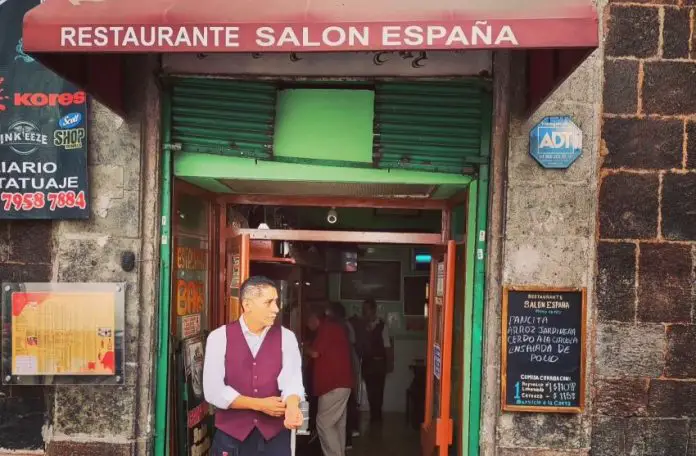You’re out for a drink (or three) in Mexico City and on the prowl for the best cantinas. The very best, steeped in history, culture and tequila. But does anyone even know what the word cantina means? To be honest, it doesn’t seem so. There are several theories behind its origins, all of which come back to an Italian word referring to a wine dispensary.
Which fits the mold. A cantina, as it’s known here in Mexico, is an ol’ fashioned bar with noticeably bad lighting that serves up your favorite tequila with a side of potato chips dripping in lime juice and salsa botanera.
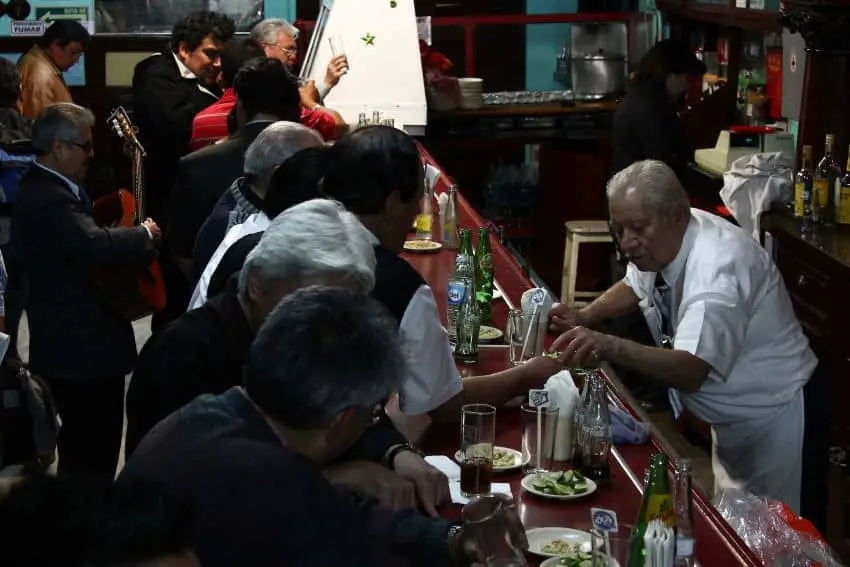
Where did cantinas come from and how did they become so ingrained in Mexican culture? The alcohol-infused hideouts began to surface at the turn of the 19th century as a place to relax with a drink and a bite while listening to classic Mexican music. You and your friends could play cards or discuss politics to your heart’s content with no time limit. Rumor has it that after three drinks, food was free and bountiful. It kept coming, as did the tipples – even if you were falling over, it was rare that a bartender would ever stop serving you.
There was just one rule.
You had to be a man to enter. Unless you were a man in uniform. Then you’d get the boot, along with your dog, as canines weren’t allowed in, either.
Were the drinks unlimited because no women were allowed? Or were no women allowed because of the unlimited drinks? Whether it was the chicken or the egg, the fact is that the statue remained in place for over a century. In 1982, 110 years after the first documented cantina El Nivel opened in Mexico City, women were finally granted entry into Mexico’s mysterious, smoky, historical haunts.
And even though they’re a dying breed, there are many that still remain.
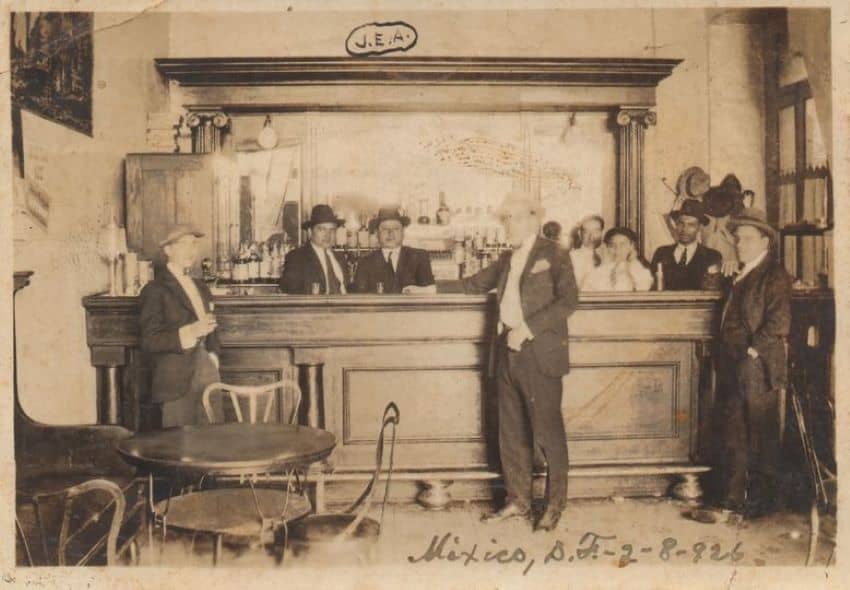
The next time you get the urge to knock back three drinks and tuck into endless tacos, forgo that fancy bar in Roma and take a step back in time at one of the capital’s oldest cantinas.
La Peninsular
Year opened: 1872
Address: Peatonal Alhondiga 26, Centro
If El Nivel is the oldest cantina in Mexico City according to its city license registration, La Peninsular is the second oldest. Both opened the same year, only one is still standing. Even though it was remodelled in 2013, it has held on to some traditional elements, including the dirty, old-school advertisements on the walls. Legend has it that Pancho Villa would escape here while in town during the Revolution.
El Gallo de Oro
Year opened: 1874
Address: Calle Violeta 1, Centro
Its location on a bustling corner of Centro is perhaps the reason The Golden Rooster attracted the likes of Guillermo Prieto, Justo Sierra, and Juan de Dios Peza once upon a time. There’s a story that it was also the meeting point for Spanish exiles who fled to Mexico during Spain’s Civil War. It’s old and a little depressing, just the way it should be.
La Jalisciense
Year opened: 1870
Address: Avenida Montevideo 518, San Bartolo Atepehuacán
It won’t surprise you to find out the original owners hailed from Jalisco. Expect a traditional atmosphere complete with a mahogany bar, wooden tables, and plenty of historical photographs of the cantina’s past and its patrons, including Renato Leduc, the great Mexican poet. On Fridays, they serve paella.
View this post on Instagram
Tío Pepe
Year opened: 1890
Address: Corner of Dolores and Independencia, Barrio Chino, Centro
Beneath an original sign that states “Entrance is forbidden to minors, women and street vendors”, all are now welcomed warmly. It’s a cozy and classic bar and, some like to say, was the underground gathering point for the Gang of the Gray Car. The infamous group of thieves would don police uniforms and use fake search warrants to rob wealthy families before jumping into their gray getaway car.
La Potosina
Year opened: 1890
Address: Calle José María Pino Suárez 27, Centro
Walk yourself right on by the Santa Muerte statue out front and enter the cantina where Che Guevara and Pancho Villa were said to sip in between revolutionary activities. Take in your share of local bevies while chowing down on the mountainous snacks that come with each drink order. If you get the drunken urge to shop for mostly useless tchotchkies, the street is decked to the nines with vendors.
Cantina La Castellana
Year opened: 1892
Address: Antonio Caso #58, San Rafael
Officially La Castellan opened as a grocery store and transformed into a cantina in 1914. Within its walls have been many famous visitors. The celebrated composer Álvaro Carrillo is said to have written many of his hits here, while Pablo Neruda came to discuss “literature and communism”. While you might not run into modern celebrities anymore, you will receive free access to the buffet if you spend 450 pesos on drinks.
Bar La Opera
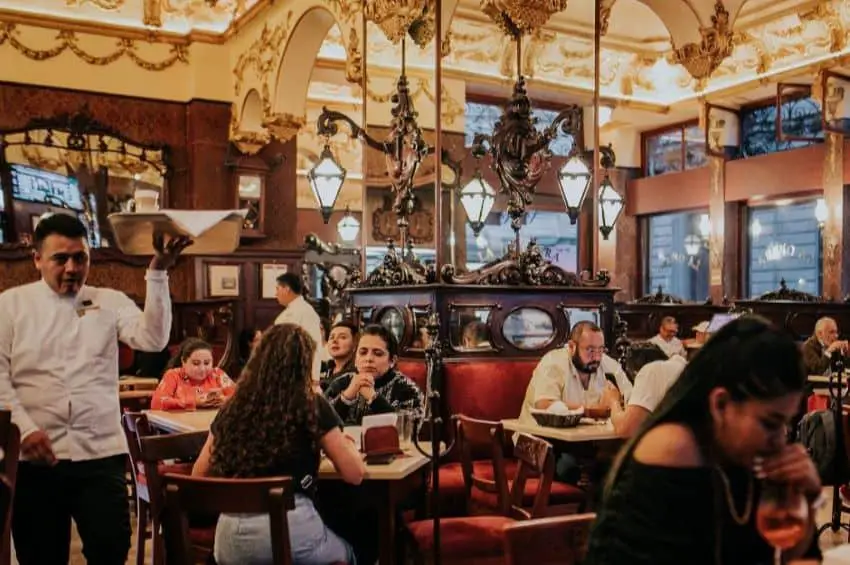
Year opened: 1895
Address: Calle 5 de Mayo 10, Centro
The list of famous patrons that once frequented the elegant Bar La Opera is a long and lustrous one, and it includes Don Porfirio Díaz and his wife, Carlos Fuentes, and Octavio Paz. Though none caused quite the stir that Pancho Villa once did when he supposedly fired his pistol into the ceiling. While Villa is long gone, it’s said that the bullet hole still remains.
La Faena
Year opened: Early 1900s
Address: Calle Venustiano Carranza 49 B, Centro
Part cantina, part bullfighting museum, La Faena’s opening date is as mysterious as its ambience. And that’s what you’re here for — a deep contemplation of the encased matador costumes and vintage posters that surround you, while enjoying high quality tequila and copious snacks. If you’re lucky, a lonesome mariachi band might just stumble in to entertain you in exchange for a handful of pesos.
Salon España
Year opened: 1915
Address: Luis González Obregón 25, at República de Argentina
There are almost 200 types of tequila behind the long wooden bar. If that’s not a selling point in itself, they boast the best botana in Centro and stick to the traditional cantina style — three drinks will get you the dish of the day, which can be anything from tacos to tortas to tuna sandwiches.
El Dux de Venecia
Year opened: 1918
Address: Avenida Azcapotzalco 586A, Centro de Azcapotzalco
In the late 1800’s, a Venetian salesman arrived in Mexico. He opened a shop in Azcapotzalco, then a pueblo on the periphery of the historical center. In the shop, he sold European goods and alcoholic drinks until his return to Italy at the start of the revolution. Enrique Escandón took over, adding tables and sandwiches for the patrons to enjoy with a drink. The location changed in the ‘40s but the vibe remains very much the same.
Salón Tenampa
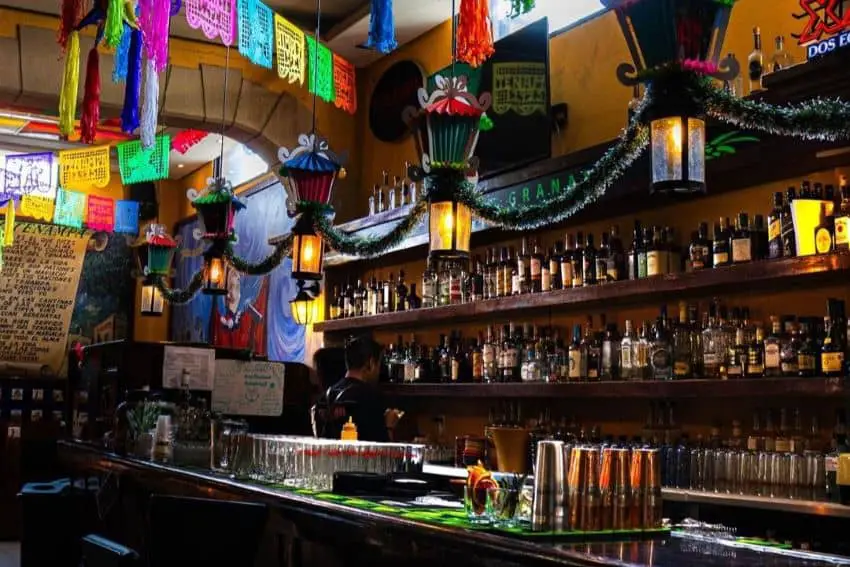
Year opened: 1925
Address: Plaza Garibaldi 12, Centro
It’s loud, it’s colorful, it’s cliche, and it’s completely ridiculous. In other words, it cannot be missed. There are no less than 5 mariachi bands belting out dramatic corridos at any given moment. Pedro Infante filmed here, Chavela Vargas sang here, and Luis Miguel drank here. What more could you want from a memorable night out in Mexico City?
La Única de Guerrero
Year opened: 1933
Address: Guerrero 258, Buenavista
For over 80 years this cantina, recognized by Mexico City as a Cultural Heritage icon, has kept its original decor and ambiance. Feel familiar? It’s been in the background of several movies and may have been the inspiration behind the cantina mentioned in Juan Rulfo’s “Pedro Páramo”.
Cantina La Perla
Year opened: Possibly 1942, unable to verify
Address: Calle Eligio Ancona 283
I once walked by this cantina with a Mexican friend while the waiter was arranging the sidewalk sign. It was around noon on a Tuesday, a bit early to toss back a mezcal, but curiosity forced us to peer inside. Dark and moody, as expected. “The food is usually pretty good,” the waiter informed us in Spanish. I still laugh when I think of it.
Bottoms up!
Bethany Platanella is a travel planner and lifestyle writer based in Mexico City. She lives for the dopamine hit that comes directly after booking a plane ticket, exploring local markets, practicing yoga and munching on fresh tortillas. Sign up to receive her Sunday Love Letters to your inbox, peruse her blog, or follow her on Instagram.
